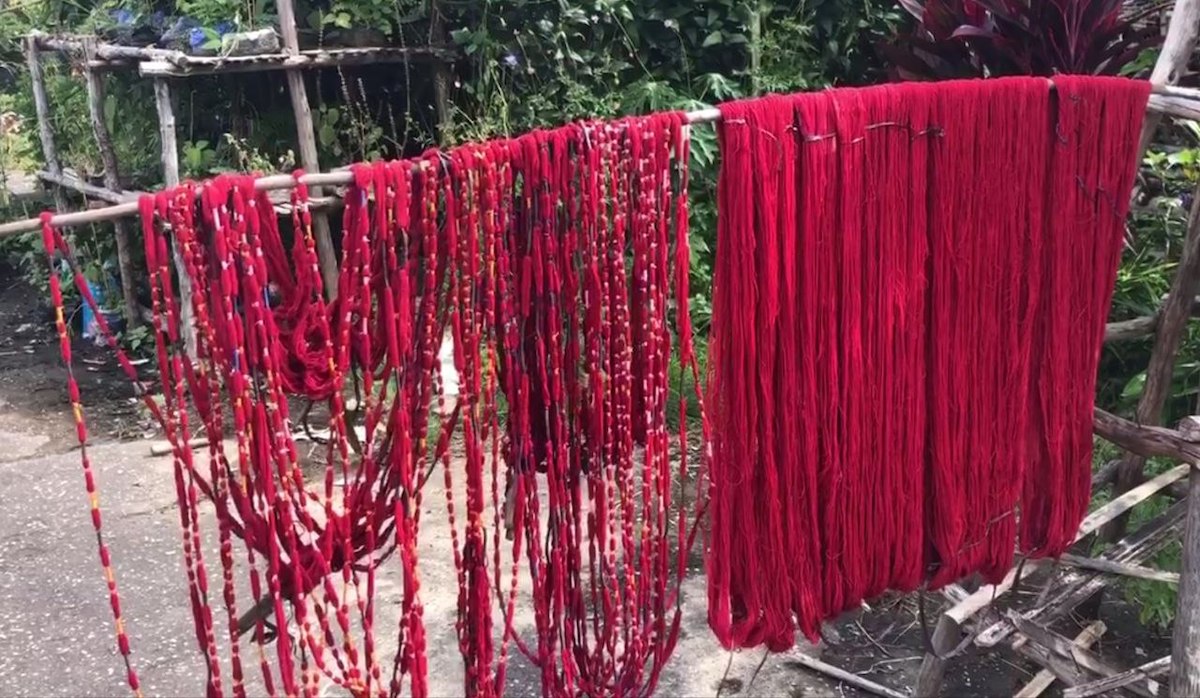Natural dyes sourced from the forest are used for weaving by Dayaks in Ensaid Panjang village.
Despite having reduced the deforestation rate by 64 percent compared to the 2015-2017 average, and standing out as a leader in forest preservation, Indonesia continues to grapple with primary forest loss.
Deforestation has had a huge impact on Indonesia’s ecosystems, contributing to severe land degradation and biodiversity loss. In 2001, the country had 93.8 million hectares of primary forest that covered over 50 percent of its land area; by 2022, the tree cover had diminished by 18 percent.
Forests situated in areas classified for other purposes are subject to the jurisdiction of the district government, and they face a growing threat from the increasing development demands. In the regions most affected – West Kalimantan, for example – the indigenous communities are gradually losing their traditional means of livelihood as well as their rights to forests, food and water.
However, all is not lost. Agroforestry is gradually helping Dayaks reclaim their right to their forests and food. In Ensaid Panjang village in the Sintang District of West Kalimantan province, the Dayak community continues to use forest products for household needs, while relying on rubber and oil palm for their main source of income.
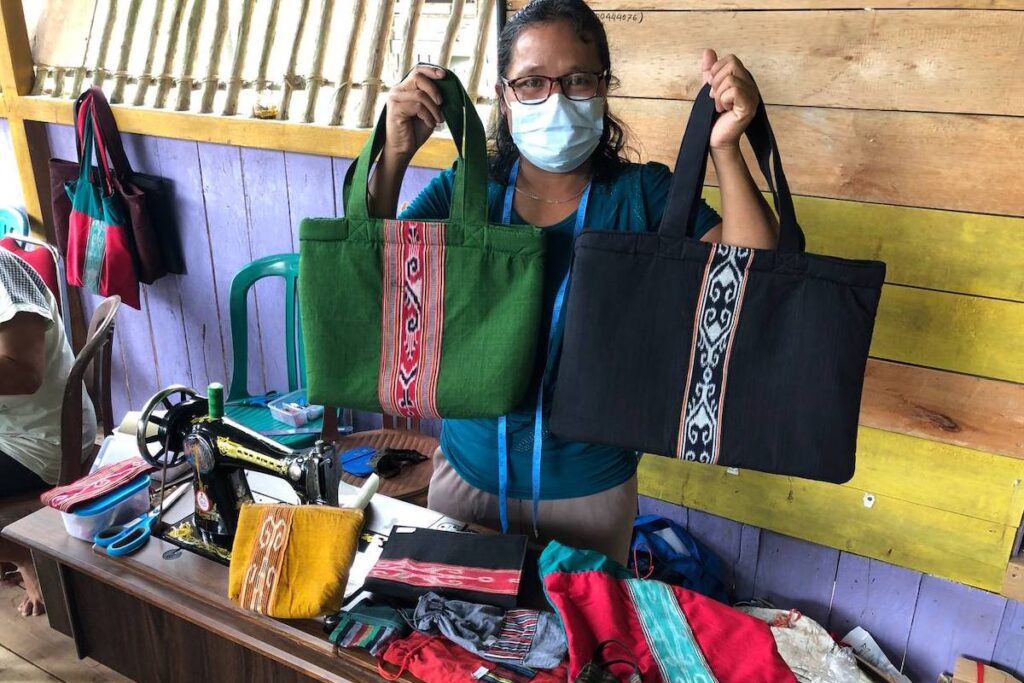
The village took decisive steps towards sustainability through the Kalimantan Forest (Kalfor) Phase II programme, facilitated by Solidaridad for a three-year period (2020–2023), with the Gerakan Credit Union Keling Kumang (GCUKK) as the collaborative partner and on-the-ground implementer.
The programme followed the vision of “triple bottom lines,” integrating economic viability, social responsibility, and environmental sustainability. In particular, the Tawang Serimbak forest within the Ensaid Panjang village now stands as an example of the benefits of working with the community to foster sustainable agricultural and forestry practices.
Boasting a remarkable diversity of 49 identified species of medicinal plants, Tawang Serimbak holds the status of a certified social forestry project, and covers an expansive area of 34 hectares. Here, the Dayak D’esa community has implemented forest land use systems that showcase a multifaceted approach to land management.
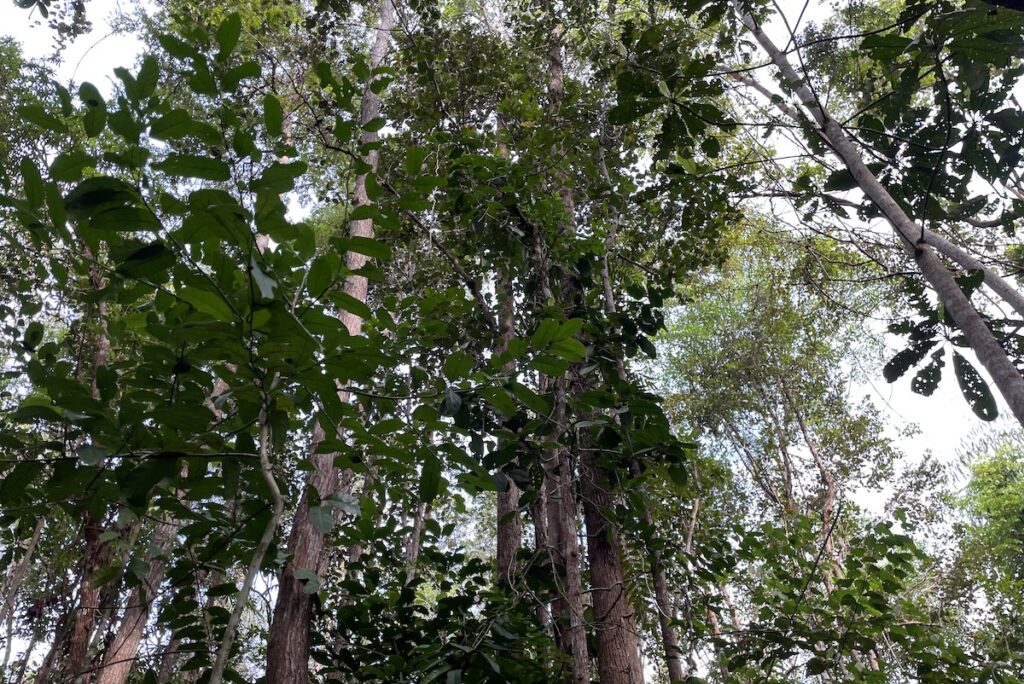
In the Ensaid Panjang village proper, Solidaridad has introduced training on land mapping, agroforestry, educational ecotourism, introduction to natural dye plants, and the fortification of institutional governance within forest management communities.
Additionally, Solidaridad deployed an approach to break the cycle of ecological poverty due to an overreliance on chemically intensive monoculture. The overarching objective was to strengthen forest management planning and to safeguard forests while preserving high-value ecosystem services and biodiversity.
Two major interventions were carried out among the forest communities:
- Building and enhancing the Ensaid Panjang community’s organizational capacity for sustainable forest management, development of local regulations at the village or district level, development of cadres or local champions, and promotion of local business ventures (e.g., weaving industry, ecotourism, etcetera).
- Establish conditions in two additional villages, Bangun and Sungai Buluh, to promote village development as well as sustainable forest management. This included targeted initiatives to enhance organizational structures, build capacity and encourage local business development, while ensuring a holistic approach to sustainable practices in these additional communities.
The programme has already yielded positive outcomes for 192 families in Ensaid Panjang. Agricultural and forest productivity has improved; there has been a noticeable growth of supplementary income generated through tourism and crafts; and sustainable management of natural resources has increased.
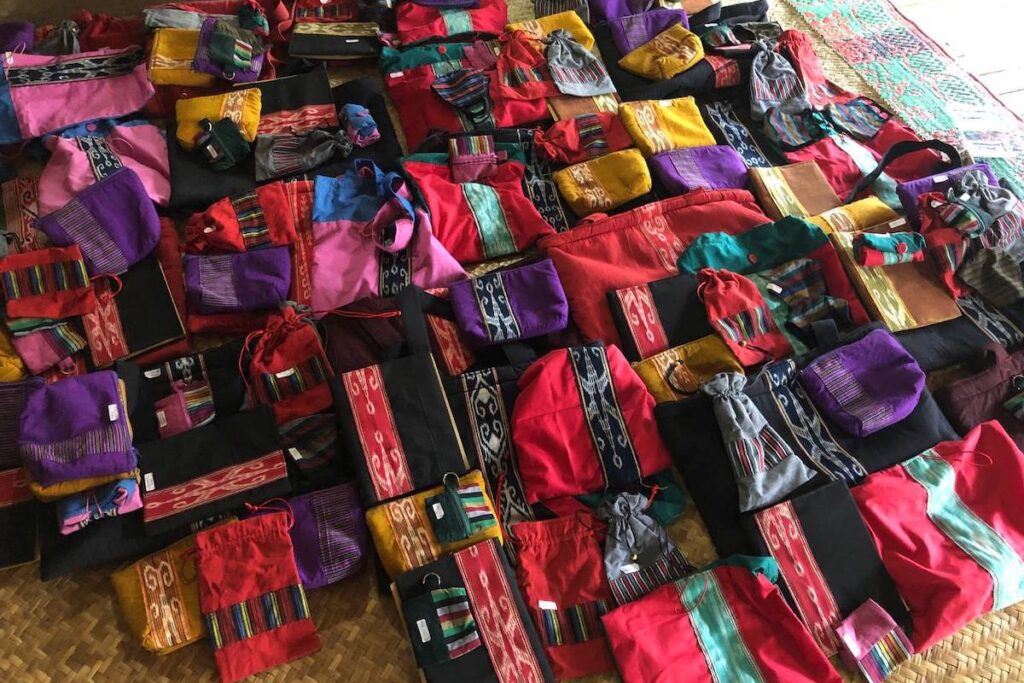
Other highlights include:
- Successful signage of Free, Prior and Informed Consent (FPIC) documents with the signatures of representative villagers from the three participating villages.
- Establishment of a village-level forest management unit that reinforces local governance structures to ensure effective forest management.
- Training on spatial (forest) planning to village governments and village-level forest management units.
- Training on financial literacy for 46 villagers to support them with essential financial management skills.
- Training sessions on woven-product diversification for 20 female weavers and 36 teenagers to support a regeneration of weaving skills in the community, while cultivating proficiency in the making of book covers, pouches, tote bags, non-medical masks and other items
- Training sessions on ecotourism for the village-level forest management unit and the village government of Ensaid Panjang to promote sustainable practices in the region
The programme has also worked with local weavers to revive the art of ikat weaving using natural dyes sourced from Tawang Serimbak forest.
“I am grateful and excited to apply the knowledge I obtained from diversification training. It has really broadened my horizon, and it motivates me to come up with better and more creative products,“ says Lidwina Rema, a skilled traditional weaver from Ensaid Panjang.
There is also an ecological element to the resurgence of the woven ikat art. In Tawang Serimbak, engkerbang and tarum leaves are collected from the forest and taken to the Rumah Betang (traditional house) in the village, where women process them to create coloring agents for textile products. The collecting of leaves provides a source of income for foragers.
The forest is like a supermarket of natural resources. Whatever we need – food, medicines, even materials to build a house or furniture – are available to us. We can utilize forest resources sustainably. And it is imperative to keep the forest in good condition.
The forest is like a supermarket of natural resources. Whatever we need – food, medicines, even materials to build a house or furniture – are available to us. We can utilize forest resources sustainably. And it is imperative to keep the forest in good condition.
Sembai, a resident of Ensaid Panjang, who forages daily in the forest.
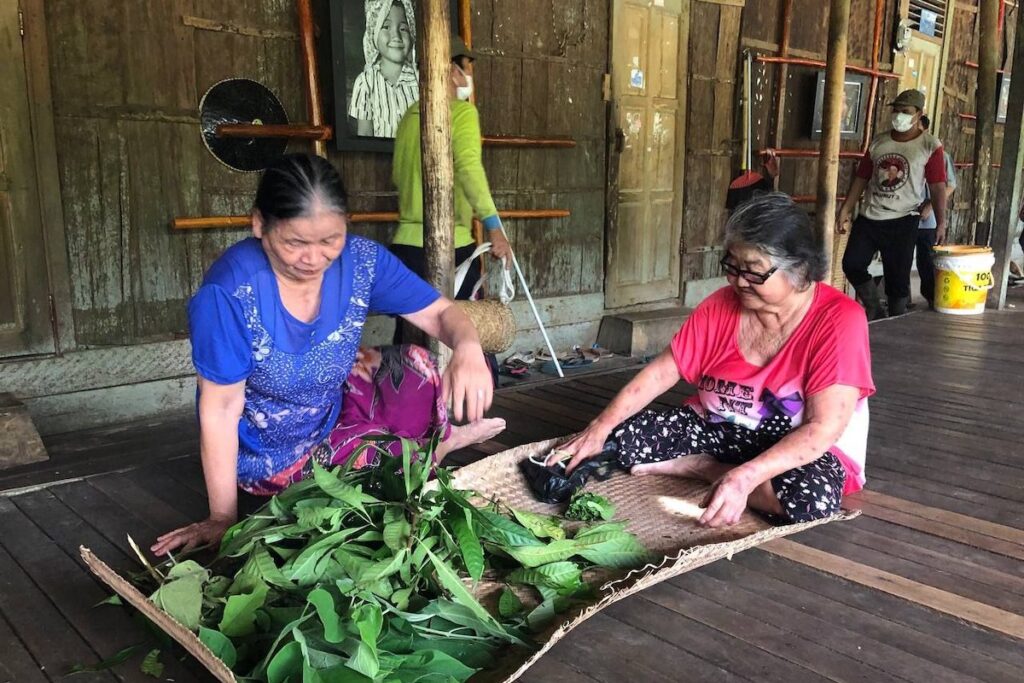
Moving forward, programme partners plan to develop a sustainable ecotourism model for the lush, green Tawang Serimbak forest area. However, even though 140 tourist spots have been identified in the Sintang district, there is significant work to be done bringing villagers on board with the ecotourism project. Training and discussions are supporting these efforts and include:
- Preparation of policy and institutional tools: Participants plan to set up a management body, supervised by village heads and traditional institutions, to oversee forest management deliberations, decrees, regulations and to define the roles of members.
- Identification of cultural and tourist attractions: These range from ikat weaving, traditional dances and rituals, celebrations and festivals, to activities such as camping, waterfall and forest tourism and more.
- Formulation of tourism packages or businesses: These aim to incorporate immersive/participatory experiences such as weaving workshops and culinary tours.
- Incorporation of a permaculture model: This model will be at the centre of the ecotourism approach, promoting organic and integrated farming practices among villagers, while also ensuring sustainable tourism.
“The strides we have made in Ensaid Panjang village have demonstrated our commitment to fostering an environment where economic growth, social responsibility and environmental sustainability coexist harmoniously,” says Billy Hasbi, Head of Programme Operations, Solidaridad Indonesia.
Reflecting on the journey so far, he adds, “This success is a proof of the power of collaboration, traditional knowledge, and innovation. We remain committed to continuing this work, strengthening the community’s resilience to climate change, and safeguarding the Tawang Serimbak forest as a precious living legacy.”

